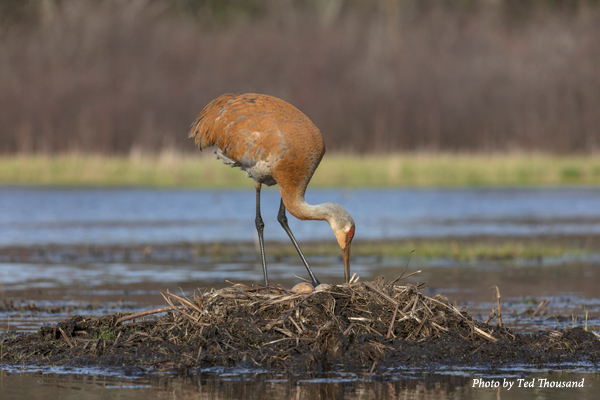After the count, the next step is to enter your data. Some county coordinators may prefer to enter all of their county data. If your coordinator requests to do this, simply hand in your data sheet to them after the count.
Counter Information

Do you have questions about how to use the data entry form?
Click here to view our video instructions.
…
Thank you for your interest in the Annual Midwest Crane Count!
To participate in Crane Count you first need to contact your County Coordinator to be assigned a site and receive additional instructions. Click here to view the listing of county coordinators.
See “Counter Resources” and “Crane Count 101” below for survey instructions and to download your data sheet and other useful links. If you have further questions, contact the International Crane Foundation Crane Count Coordinator.
As always, please remember your Crane Count Etiquette:
- Please give cranes the respect and distance they need and do not approach birds on foot within 200 yards. If you are in a vehicle, remain in your vehicle and do not approach any closer than 100 yards.
- Please remain concealed and do not speak loudly enough that the birds can hear you.
- Finally, do not trespass on private property in an attempt to view or count cranes. Thank you!
Happy Counting!
Counter Resources
The documents below are in PDF format and require Adobe Acrobat Reader.
Digital Maps: You may download the historic Wisconsin county maps (8.5 x 11 in). Click here to download a .zip file of the county maps. If your county sites have changed since these maps were created, please use the below Crane Count Site Finder.
Use our Crane Count Site Finder to view established crane count sites in all states. If your site is missing from this map, please contact our data manager so that we may add your site.
Sandhill Crane Identification and Calls
Crane Count 101

Your county coordinator will assign you a survey site prior to the count day. We recommend that you visit your survey site before the day of the count to identify a safe place to park your car. If your survey site is on private land or public property that is open seasonally, please contact the landowner prior to the count if you plan on entering the site on foot.
The survey is from 5:30 to 7:30 a.m. Central Time. If you count in the Eastern Time Zone, we recommend beginning your survey 15 minutes prior to sunrise in your area – approximately 6:45 a.m. Eastern Time.
On the morning of the count, try to arrive a few minutes early to make sure you are in place before the survey begins. Bring some extra paper if you’d like to take notes separately so that you can summarize on your data sheet. Don’t forget to bring warm clothes, binoculars and a warm beverage!
We recommend staying in one location during the two-hour survey to help avoid double counting birds as you, and possibly the birds, move around. Also, there’s something really magical about staying in one location as the dawn awakens around you. Some counters still do choose to move around their site or count multiple sites, and we leave this decision to the county coordinators and the experience level of the individual counters.
To the best of your ability, determine by sight and sound the number of cranes in your survey area. A single crane calling indicates a minimum of one bird. A pair of cranes duetting, called a unison call, indicates a minimum of two cranes. Tallying the total number of cranes requires some judgment, as birds may move around during your survey.
You may also record any possible breeding behaviors, including an occupied nest, nest building activity or courtship display (including a unison call). The full list of these behaviors is on your data sheet.